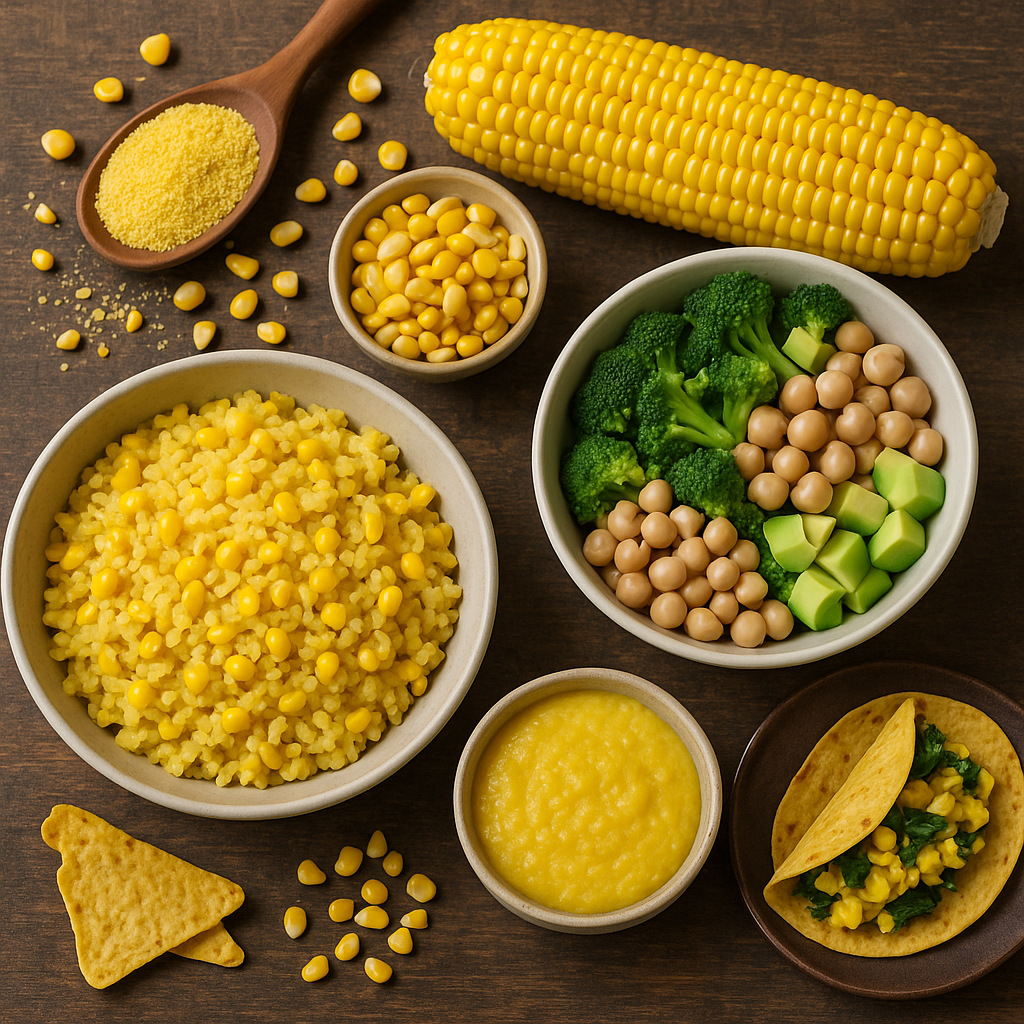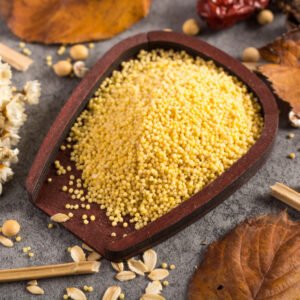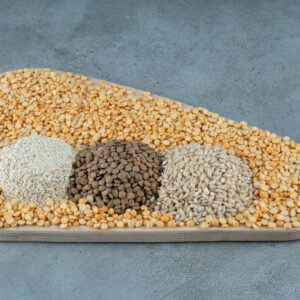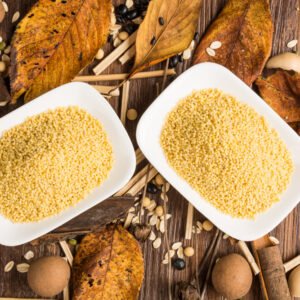Did you know that yellow maize contains up to 15% dietary fiber by dry weight, making it one of nature’s most accessible sources of this essential nutrient? In a world where processed foods dominate our plates, incorporating yellow maize as a high fiber grain into your daily meals offers a simple yet powerful way to boost your digestive health, maintain stable energy levels, and support overall wellness.
Yellow maize, commonly known as corn, has been nourishing civilizations for over 9,000 years. Today, this golden grain continues to serve as a nutritional powerhouse that can transform ordinary meals into fiber-rich, satisfying dishes that benefit your entire family.
Understanding Yellow Maize as a Nutritional Powerhouse
Yellow maize stands out among grains due to its impressive nutritional profile and natural golden color, which comes from beneficial carotenoids like beta-carotene. This grain provides 42% and 64% of the Daily Value for fiber for men and women, respectively, making it an excellent choice for meeting daily fiber requirements.
The fiber content in yellow maize primarily consists of insoluble fiber, particularly cellulose, which supports digestive health by promoting regular bowel movements and feeding beneficial gut bacteria. While corn is high in cellulose, an insoluble fiber that the body cannot digest, the body breaks down other components effectively when chewed properly.
Key Nutritional Benefits of Yellow Maize
Yellow maize offers several advantages that make it ideal for everyday consumption:
Rich in Complex Carbohydrates: Provides sustained energy release, preventing blood sugar spikes common with refined grains.
Gluten-Free Nature: Makes it suitable for individuals with celiac disease or gluten sensitivity, offering a safe alternative to wheat-based products.
Antioxidant Properties: The vibrant yellow color indicates high levels of carotenoids, which combat free radicals and support eye health.
Essential Minerals: Contains significant amounts of magnesium, phosphorus, and potassium, supporting bone health and cardiovascular function.
Creative Ways to Use Yellow Maize in Everyday Meal Planning
Breakfast Applications
Transform your morning routine by incorporating yellow maize into fiber-rich breakfast options. Ground yellow maize creates excellent polenta, which can be cooked with milk or plant-based alternatives and topped with fresh fruits, nuts, and honey. This preparation provides sustained energy while delivering essential fiber to kickstart your digestive system.
Whole kernel yellow maize works wonderfully in breakfast hash combinations with vegetables like bell peppers, onions, and spinach. The natural sweetness of the grain complements savory ingredients while adding substantial texture and nutritional value.
Lunch and Dinner Integration
For main meals, yellow maize serves as an excellent base for grain bowls, salads, and side dishes. Cooked yellow maize kernels can be mixed with black beans, diced tomatoes, avocado, and fresh herbs to create a complete protein meal that’s both satisfying and nutritionally balanced.
Consider using yellow maize flour for coating proteins or vegetables before cooking, which adds fiber content while creating a delicious golden crust. This technique works particularly well with fish, chicken, or roasted vegetables.
Snack and Side Dish Options
Roasted yellow maize kernels make an excellent fiber-rich snack alternative to processed chips or crackers. Simply toss cooked kernels with olive oil and your favorite seasonings, then roast until crispy. This preparation method preserves the fiber content while creating a satisfying crunch.
Yellow maize can also be incorporated into soups and stews, where it adds both substance and nutritional value. The grain absorbs flavors well while contributing to the meal’s overall fiber content.
Maximizing Fiber Absorption and Digestive Benefits
To optimize the nutritional benefits when you use yellow maize in everyday meal preparation, proper cooking and preparation methods are essential. Soaking dried yellow maize overnight before cooking helps soften the fiber structure, making nutrients more bioavailable.
Preparation Techniques for Better Digestion
Proper Cooking Methods: Steam or boil yellow maize until tender to break down tough cellulose walls, making fiber more digestible and nutrients more accessible.
Combination with Other Foods: Pair yellow maize with healthy fats like olive oil or avocado to enhance the absorption of fat-soluble vitamins present in the grain.
Adequate Chewing: Chewing corn for longer can help the digestive system break down cellulose walls to access more nutrients, maximizing the benefits of this high fiber grain.
Gradual Introduction: If you’re new to high-fiber foods, gradually increase your yellow maize consumption to allow your digestive system to adjust comfortably.
Meal Planning Strategies with Yellow Maize
Weekly Meal Prep Ideas
Batch cooking yellow maize at the beginning of each week provides a convenient base for multiple meals. Cooked kernels can be stored in the refrigerator for up to five days and easily incorporated into various dishes throughout the week.
Prepare large quantities of yellow maize polenta and portion it into containers. This versatile base can be reheated and served with different toppings each day, from savory vegetables and proteins to sweet fruit and yogurt combinations.
Family-Friendly Recipes
Yellow maize as a high fiber grain appeals to all family members when prepared creatively. Mix cooked kernels into ground meat for burgers or meatballs, adding fiber while maintaining familiar flavors that children enjoy.
Create colorful vegetable and yellow maize salads that can serve as complete meals or substantial side dishes. The natural sweetness of the grain makes these preparations appealing to picky eaters while ensuring they receive essential fiber and nutrients.
Seasonal Adaptations
Summer preparations can focus on fresh, raw applications where yellow maize adds crunch and sweetness to salads and cold dishes. During colder months, incorporate the grain into warming soups, stews, and baked casseroles that provide comfort while maintaining nutritional benefits.
Health Benefits Beyond Fiber Content
While fiber remains the primary reason to use yellow maize in everyday meals, this versatile grain offers additional health advantages that support overall wellness.
Digestive Health Support
Fiber helps our body remove toxins, and the specific type found in yellow maize promotes healthy gut bacteria growth. Regular consumption supports digestive regularity while potentially reducing the risk of digestive disorders.
Energy Management
The complex carbohydrates in yellow maize provide steady energy release, helping maintain stable blood sugar levels throughout the day. This characteristic makes it particularly valuable for individuals managing diabetes or seeking sustained energy for active lifestyles.
Heart Health Contributions
The combination of fiber, antioxidants, and essential minerals in yellow maize supports cardiovascular health by helping manage cholesterol levels and providing nutrients necessary for heart function.
Quality Sourcing and Storage Tips
When incorporating yellow maize as a high fiber grain into your meal planning, sourcing quality products ensures maximum nutritional benefits. Look for suppliers who specialize in premium agricultural products and maintain high standards for freshness and purity.
CMS Industries, a leading agricultural products manufacturer and supplier in India, offers premium quality grains including yellow maize that meets international standards. With over two decades of experience in the agricultural sector, they ensure that farmers receive fair compensation while delivering superior products to consumers worldwide.
Storage Best Practices
Store whole yellow maize in airtight containers in a cool, dry place to maintain freshness and prevent pest infestation. Ground yellow maize has a shorter shelf life and should be used within several months of opening for optimal flavor and nutritional value.
Cooked yellow maize should be refrigerated and used within five days, while frozen cooked kernels can maintain quality for several months when properly stored.
Conclusion
Incorporating yellow maize as a high fiber grain into your everyday meals represents a simple yet effective strategy for improving your family’s nutritional intake. From breakfast polenta to dinner grain bowls, this versatile ingredient offers countless opportunities to boost fiber consumption while enjoying delicious, satisfying meals.
The journey to better health through improved nutrition doesn’t require dramatic changes – it simply needs thoughtful additions like yellow maize that provide substantial benefits with minimal effort. By understanding proper preparation methods and creative applications, you can transform this ancient grain into a modern solution for contemporary nutritional needs.
Ready to explore premium yellow maize and other high-quality agricultural products for your kitchen? Visit CMS Industries to discover their comprehensive range of grains, pulses, and agricultural products that support healthy, sustainable living for families worldwide.
Frequently Asked Questions
Q1: How much yellow maize should I consume daily to get adequate fiber?
Adults should aim for 25-35 grams of fiber daily. One cup of cooked yellow maize provides approximately 4-5 grams of fiber, making it an excellent contribution to your daily fiber intake goals.
Q2: Can yellow maize replace other grains in my diet completely?
While yellow maize is nutritious, dietary variety is important. Use it as part of a diverse grain rotation including quinoa, rice, and other whole grains for optimal nutrition.
Q3: Is yellow maize suitable for people with diabetes?
Yes, when consumed in moderation. The fiber in yellow maize helps slow sugar absorption, but portion control remains important for blood sugar management in diabetic individuals.
Q4: How do I know if yellow maize is properly cooked?
Properly cooked yellow maize kernels should be tender when pierced with a fork but still maintain some firmness. Overcooking can reduce nutritional value and fiber benefits.
Q5: Can I use yellow maize flour instead of whole kernels for fiber benefits?
Yellow maize flour retains most fiber content, but whole kernels provide additional benefits from the complete grain structure. Both forms offer valuable fiber contributions to your diet.





